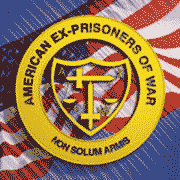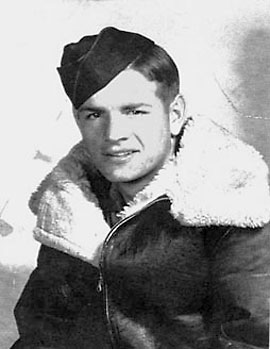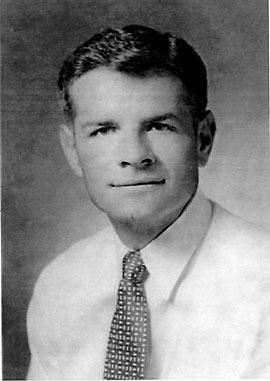
Established April 14, 1942
 |
American Ex-Prisoners of War
A not-for-profit, Congressionally-chartered veterans’ service organization advocating for former prisoners of war and their families.
Established April 14, 1942 |


St. Sgt. John R. Parsons, 1943
|

John Parsons, 1942
|
|
| Last Name | First Name, Middle Init. | Nickname |
| Spouse | City | State, Zip |
| Conflict — Theatre | Branch of Service | Unit: |
| Military Job | Date Captured | Where Captured |
| Age at Capture | Time Interned | Camps |
| Date Liberated | Medals Received | |
| After the War ... | ||
They flew twelve missions over flak-filled skies in Germany. The "Ramblin Wreck" was badly damaged by flak on February 20, 1944. On February 21, 1944 they flew "Lightning Strikes" and were shot down over a village near Hanover, Germany. They were taken prisoners almost immediately.
After interrogation at Dulag Luft near Frankfurt, Germany, John and the other enlisted crewmembers were taken to Stalag Luft VI near Konigsberg in Luthiwania near the Baltic Sea. The officers were taken to Stalag Luft I near Barth, Germany. John was interred here until July 1944 when they were transferred to Stalag Luft IV. During this transfer John endured the infamous Hydekrug Run. Stalag Luft IV was located near Groty-Chow, Poland.
In January 1945, John and other prisoners deemed too ill to march, were taken by train to Nuremberg, Germany. Upon arriving in Nuremberg they were locked in boxcars while allied planes literally destroyed the rail yards. John was briefly interred in a makeshift POW camp in Nuremberg. In February, John and other surviving POWs started walking south. No food or lodging was provided during this forced march for the prisoners or the guards. They stayed in barns and survived by eating flower bulbs, potatoes from pig lots or whatever they could find. They reached Moosberg, Germany in late April 1945 and on April 29, Patton's 3rd Army liberated them from the Germans. John was flown back to Camp Lucky Strike in France and arrived back in the United States by boat.
John arrived back in Lafayette, Indiana in early May, 1945. He was discharged in November 1945 and entered Indiana Business College. He was later employed by General Telephone Company.
John and Mai had a son, John Randolph Parsons in November 21, 1947. They purchased a new home using John's GI Bill entitlements. As an economic measure, John decided to join the Reserve Program. In 1951 the Korean War broke out and John was recalled to active duty. He was assigned to the 434th Troop Carrier Command and was stationed for a few months at Bakalar AFB near Columbus, Indiana. Later John was stationed at Lawson AFB near Columbus, Georgia. John's wife, Mai and small son Randy joined him.
JHe was discharged from service again in 1953. He took a position as Manager of Seaboard Finance Company, in Clearwater, FL. He was later offered a position as Vice President of National Homes Acceptance Corporation which he accepted and moved with his family back to Lafayette, Indiana. After 17 years with the National Homes Company, John took a position as Vice President of Hometown Federal Savings & Loan.
JIn 1993 at Mayo Clinic in Rochester, MN, John was diagnosed with kidney ailments. He was put on dialysis in December 1993 and continued as a dialysis patient at St. Elizabeth Medical Center in Lafayette, Indiana until his death on August 2, 1998. John had started to write his memoirs in 1994 and completed the manuscript just before his death.
The title of John's book is "The Best Seat In The House." John writes about his experiences as a top-turret gunner on a B-17 (hence the title The Best Seat In The House) and the months that he spent in different Prisoner of War camps in Germany. John's book reflects the triumph of the human spirit over extreme adversity. Another interesting self written story from the "The Greatest Generation."